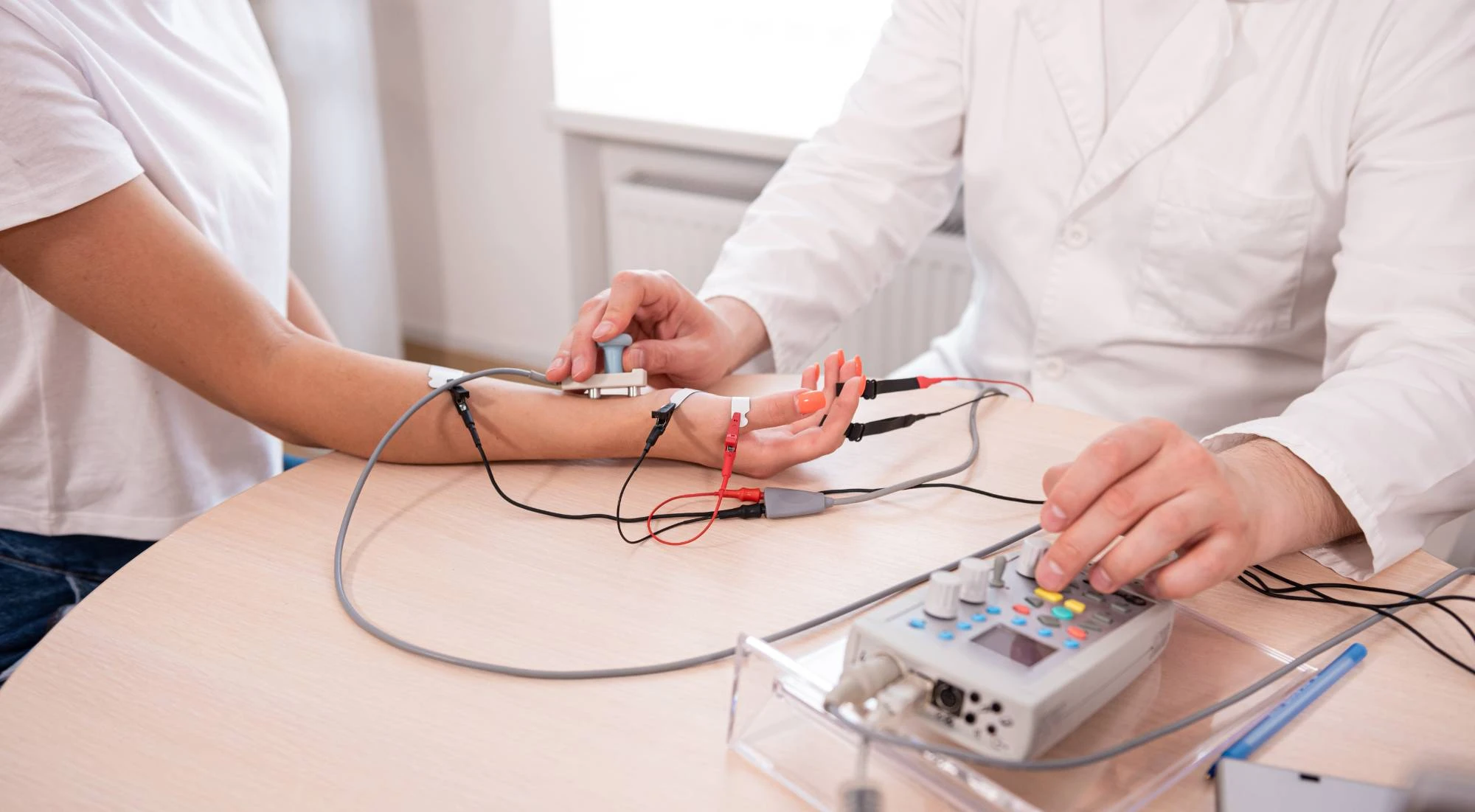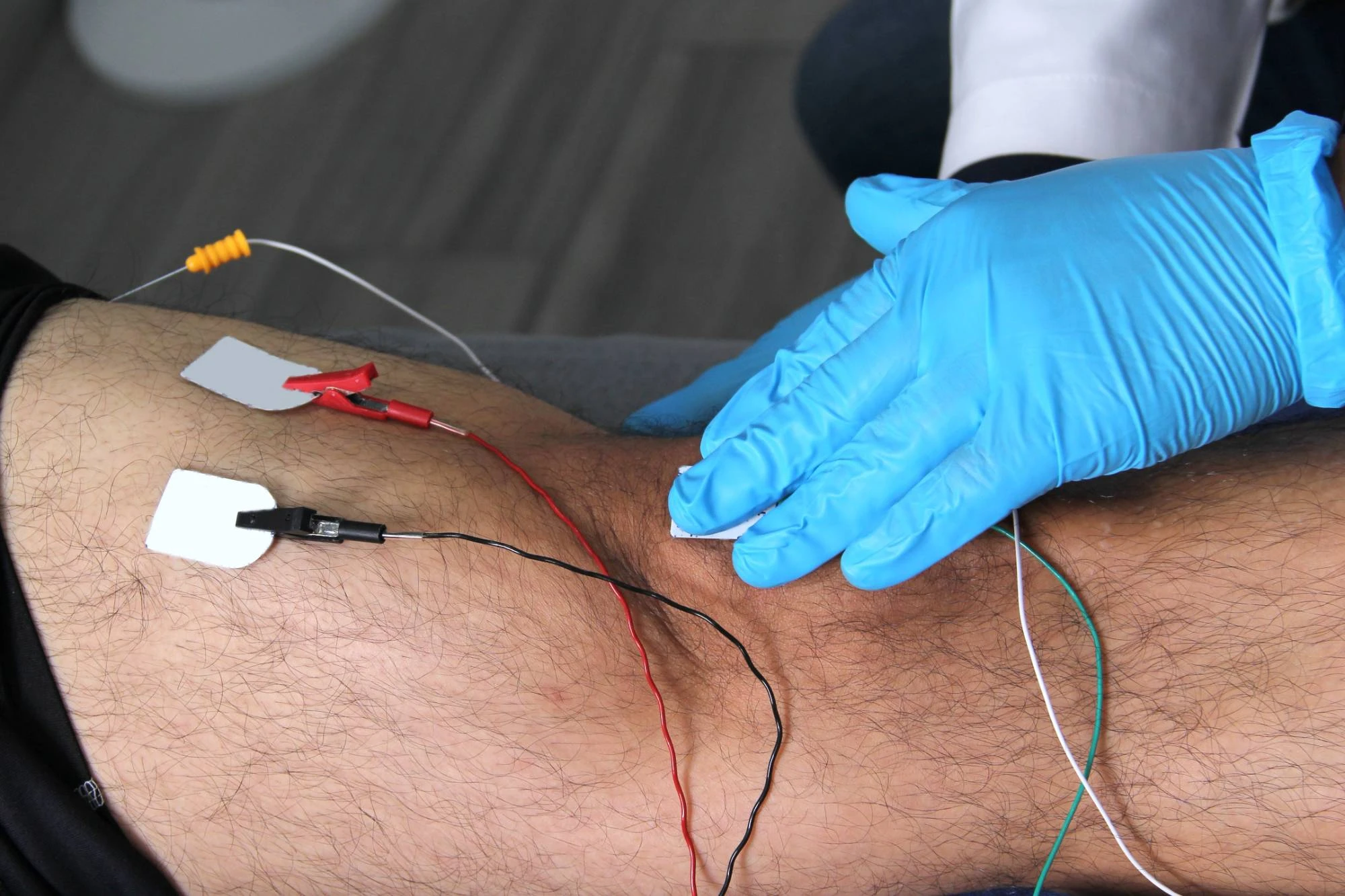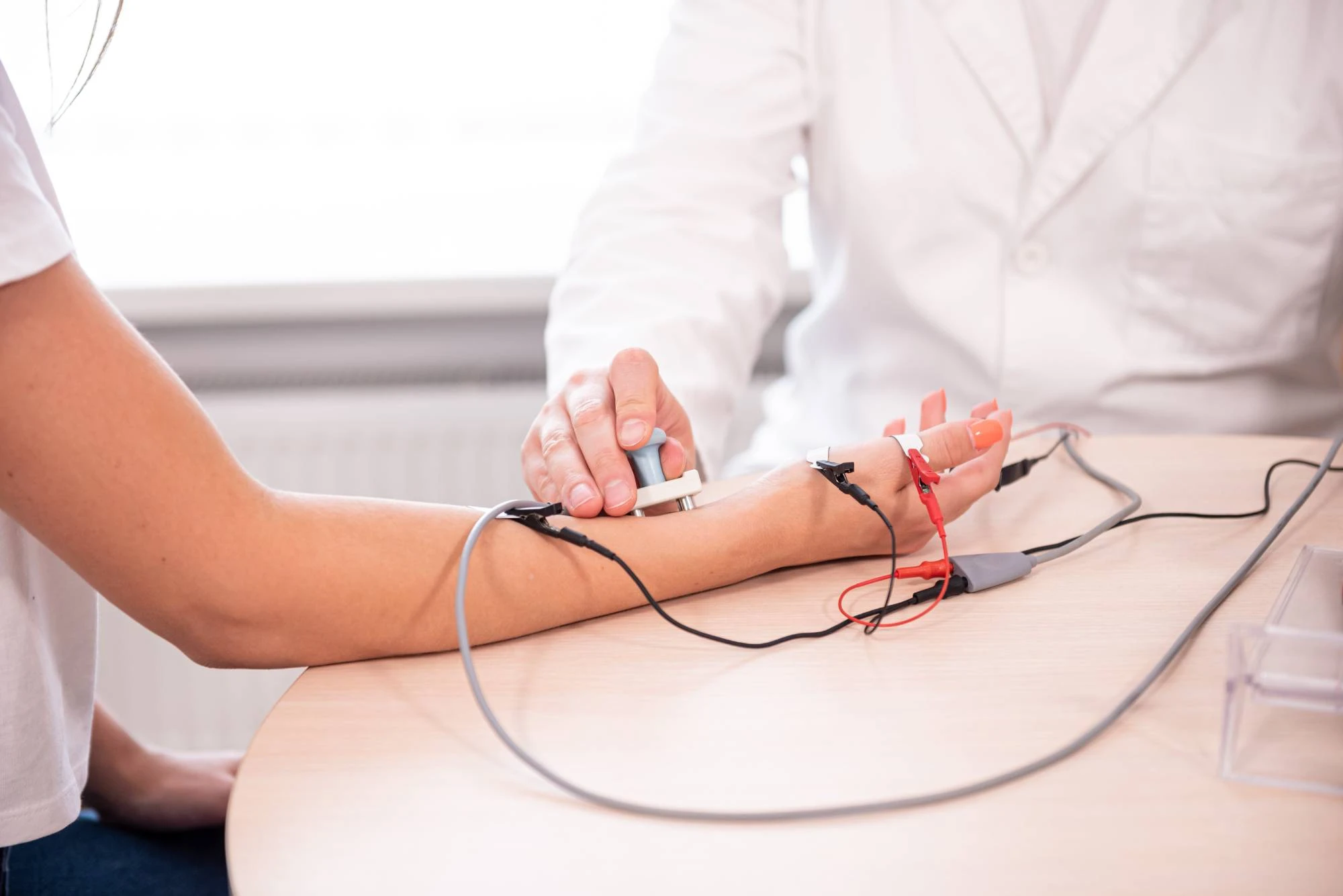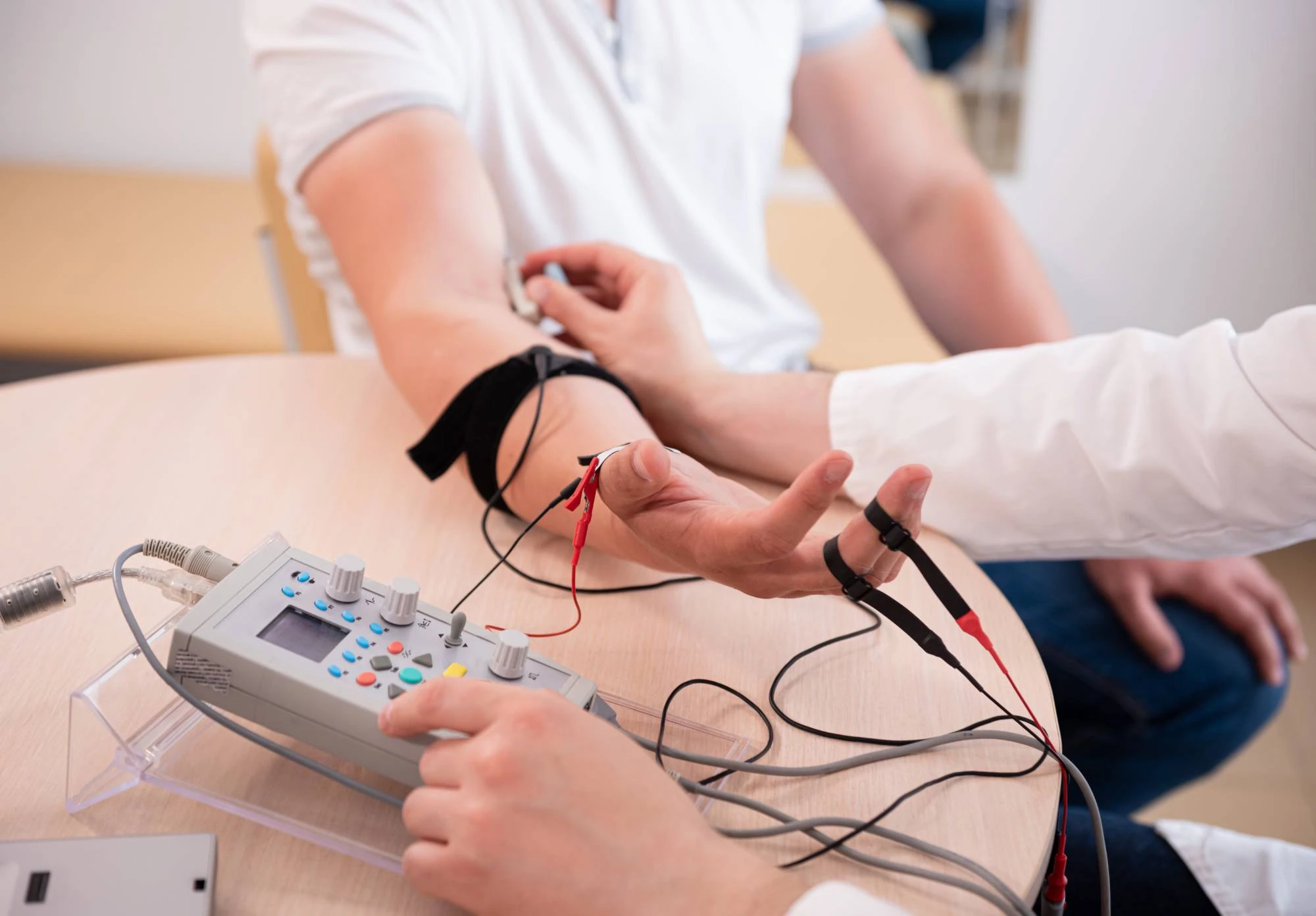Advanced electromyography testing that pinpoints exactly what’s causing your symptoms, so you can finally move forward with the right treatment.

Reviews

You’ve been dealing with numbness, tingling, or muscle weakness for months. Maybe it’s your hands falling asleep at night, shooting pain down your leg, or that constant ache that makes work unbearable. You need answers, not more guessing.
EMG testing gives you those answers. This diagnostic test measures how well your nerves and muscles communicate, identifying exactly where the problem lies. Whether it’s carpal tunnel syndrome, a pinched nerve, or something more complex, you’ll know what you’re dealing with.
Once you have a clear diagnosis, everything changes. No more wondering if the pain will get worse. No more trying treatments that don’t address the real issue. You get a roadmap for actual relief, whether that’s targeted therapy, specific exercises, or other treatments that work for your exact condition.
NY Spine Medicine has been serving the Queens community for years, helping people get to the bottom of their nerve and muscle problems. We understand that living with unexplained symptoms is frustrating, especially when you’re not getting clear answers elsewhere.
Our practice focuses specifically on spine and nerve-related conditions, which means we see cases like yours every day. We know what to look for, how to interpret complex test results, and most importantly, how to explain what’s happening in terms you can understand.
Located right here in Malba, we make it easy for local residents to get the specialized testing they need without traveling into Manhattan or dealing with the hassle of larger hospital systems.

The EMG test has two parts, and both give different pieces of the puzzle. First is the nerve conduction study, where small electrical pulses test how fast signals travel through your nerves. You’ll feel a brief tingling sensation, but it’s over quickly.
Next is the electromyography portion, where a thin needle electrode measures electrical activity in your muscles. The needle is much thinner than what’s used for blood draws, and most people find it less uncomfortable than they expected.
The entire process usually takes 30 to 60 minutes, depending on which nerves and muscles need testing. You’ll get your results the same day, along with a clear explanation of what they mean and what your next steps should be. No waiting weeks to find out what’s wrong.

Ready to get started?
Your EMG testing includes both nerve conduction studies and electromyography to get the full picture of what’s happening. This comprehensive approach catches issues that might be missed with just one type of testing.
We test multiple nerve pathways and muscle groups as needed, depending on your symptoms. If you’re dealing with hand numbness, we’ll focus on the nerves that control sensation and movement in your arms and hands. For leg pain or weakness, we’ll examine the nerves running from your spine down to your feet.
You’ll also receive detailed results interpretation and treatment recommendations based on your specific findings. Many patients leave with a clear understanding of their condition for the first time in months, plus a practical plan for addressing it.

New York:
Florida:
Support